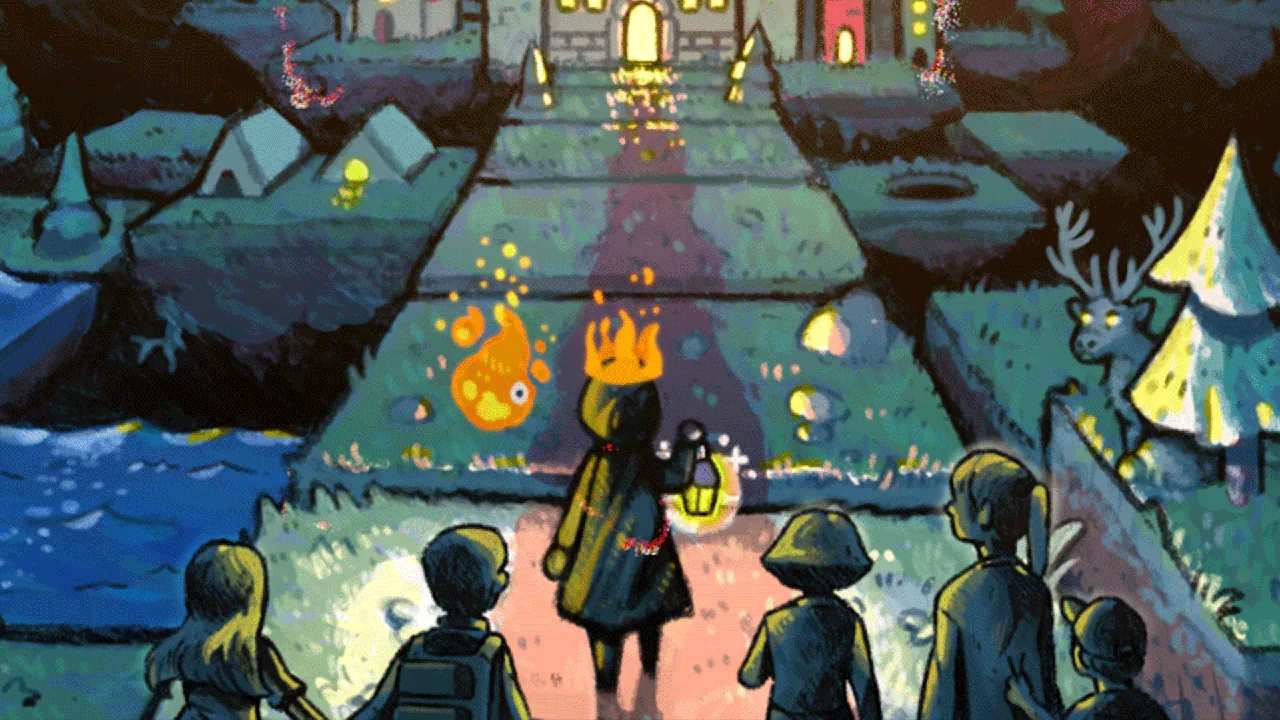These past days, I had the chance to get my hands on Dawnfolk before the release. After joining the playtesting back in October, I was eager to play its final version.
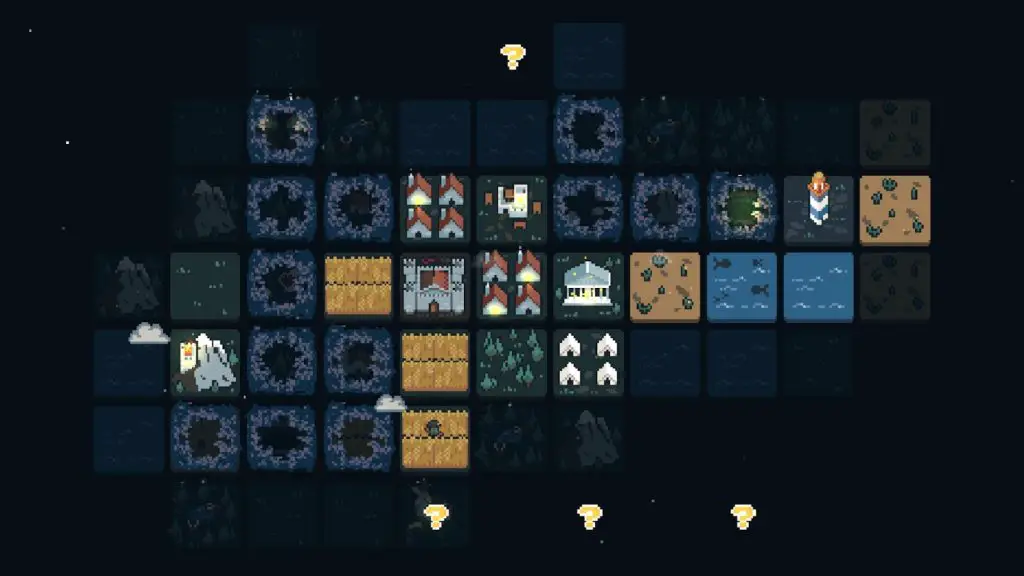
Dawnfolk is a minimalist city-builder focused on short play sessions and easy-to-understand commands. Construct, manage resources and advance through the map by illuminating the tiles and uncovering its secrets and treasures. The game is easy to grasp, and you’ll quickly understand the basics after a brief tutorial—at least if you’re familiar with the fundamentals of city-building games.
- Switching Between RTS and Turn-Based System
- Different Game Modes
- A Brilliant Narrative
- Accessibility
- Conclusion
SWITCHING BETWEEN RTS AND TURN-BASED SYSTEM
The particularity of this game is that you can choose to play it as an RTS or pause it and switch to a turn-based format. This mechanic reminded me of DotAge. In this way, Dawnfolk operates similarly to DotAge, as the spending and acquisition of resources use a simple formula of addition and subtraction. At the end of each day, you receive a certain number of resources based on your city structure and the total sum.
You can choose to “pass turn” even while the game is paused, allowing you to continue gathering resources or building. This option is only available on medium or low difficulty; in hard mode, the pause button is disabled.
For a slow and indecisive player like me, it’s really useful to be able to pause time and make it advance 1 day by 1 day to check if my decisions were correct or if I need some adjustments for the long term strategy. However, this “game mode” feels more like a feature to help with decision making rather than a game designed to be turn-based. I didn’t end up using the turn-based option more than a few times where I needed to play more paused, but in the same way as I would pause any other city builder.
Another interesting design decision is the inclusion of mini-games with arcade mechanics. At first, I thought these mini-games would disrupt the mood, but they are actually well-implemented and have improved a lot since the playtesting version.
DIFFERENT GAME MODES
Dawnfolk has six different game modes: Story, Puzzle, Curious Expeditions, Sandbox, and Endless. That is, in my humble opinion, a lot of different modes with tons of possibilities. Inside each mode, there are sub-modes or challenges. You can beat the main story in 6-10 hours, but if you want to complete the whole game and rewards, it can go up to 70 hours! Don’t touch the Endless mode if you like having a life…
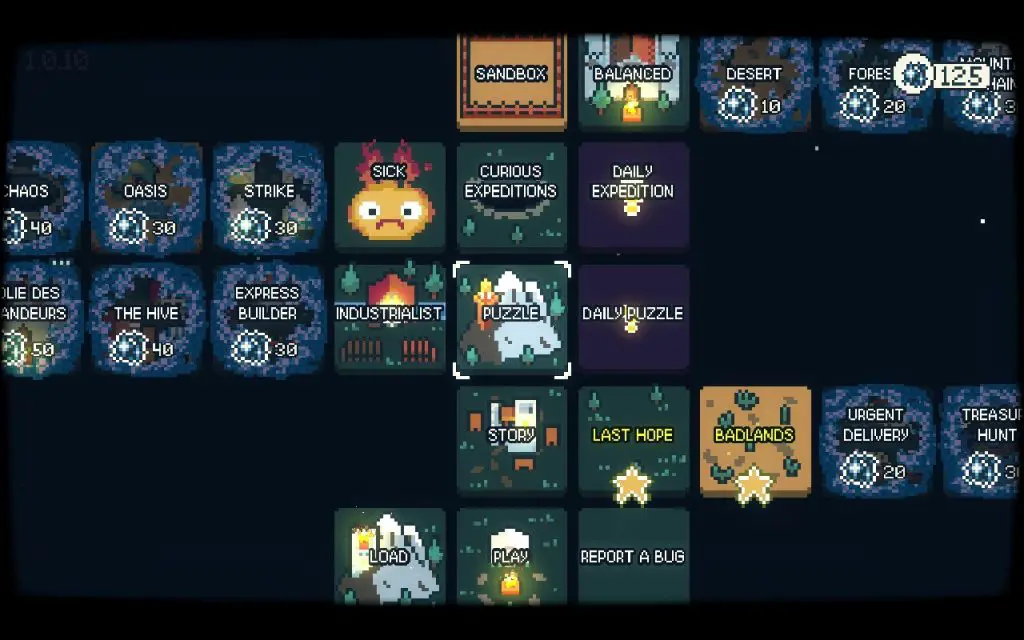
Not all of these modes are available as soon as you open the game – you’ll have to play and earn points to unlock different scenarios and game modes, but this system feels easy and rewarding.
Story, Endless and Sandbox are quite self-explanatory. In Story mode, you follow the main narrative and advance with Lueur’s guidance. For each level of the story, you can choose which difficulty you want to play. In Endless mode, you have to survive as long as possible, with no directions nor restrictions other than Lueur’s voice giving you some milestones. And Sandbox is a free map to try all the combinations and strategies that you want – really useful to understand how certain buildings work without compromising the mission.
Puzzle mode focuses on optimization and logic. You have an almost infinite pile of resources with the goal of reaching a certain production level per day on a finite map.
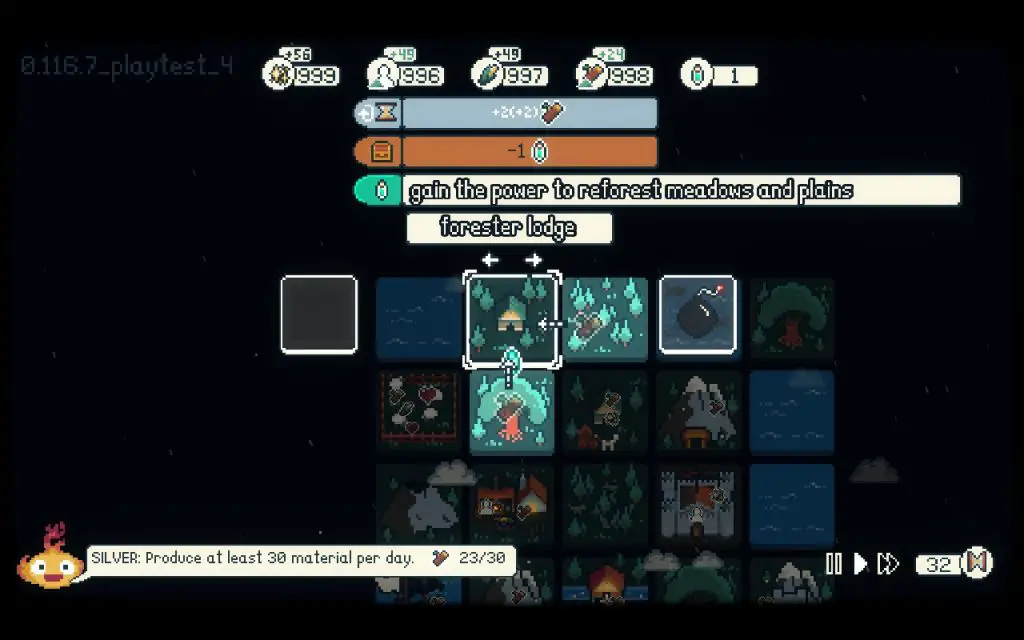
Curious Expeditions mode introduces interesting gameplay twists. In “Bad Fever”, the first level, Lueur feels unwell, causing his power to become erratic – Instead of choosing which tile to illuminate and unlock, the selection becomes random.
A BRILLIANT NARRATIVE
However, my favourite feature of Dawnfolk is… the narrative. The story begins when you, the ruler of a fallen kingdom, awaken Lueur to banish the darkness plaguing the world. You’ll face mysterious monoliths that radiate darkness and consume everything they touch. Where they come from, what they are and what is this world are questions that will be revealed as you progress through the map.
Dawnfolk uses a very clever way of unveiling the narrative. Lueur tells the story by reading the lost notes in abandoned windmills or transcribing the campfire tales in the orc village. To find these lost capsules of information, you’ll need to explore the map thoroughly. However, venturing too far may expose you to hidden monoliths and dire consequences if you lack the necessary infrastructure to resist them.
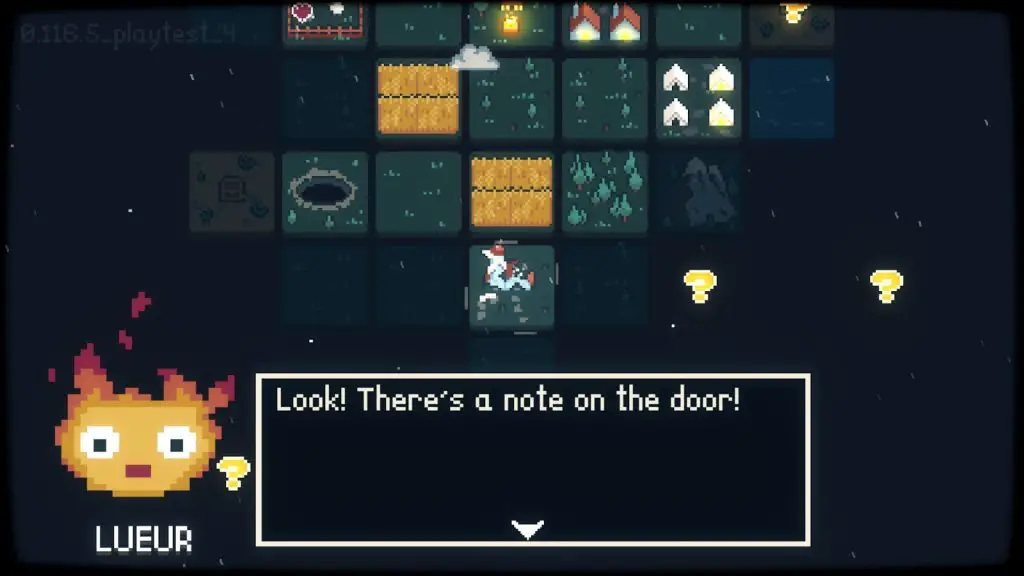
Random events occur during gameplay, forcing you to decide how to proceed. “Oh no, an old fisherman is lost; should we search for him?” In this dilemma, you face the Good option (search for him) and the Selfish option (not using resources to save him). However, the outcome of the decisions feel unbalanced. Choosing the Good option yields a much greater benefit. There is no motivation to act as a villain unless you lack the resources. I was waiting for some moral struggling here, but it’s okay, sometimes it feels nice to just be a good person without pressure.

ACCESSIBILITY
I discovered Dawnfolk during the Access-Ability Summer Showcase 2024. Darenn, the developer, was working on a voice-reading system that describes the content or nature of each tile as you hover your cursor over it. However, he told me that after many tries, he decided to not implement it in the final version. As a solo-dev, he had to make some hard decisions to reduce the scope of production.
Still, Darenn has included other accessibility options, such as changing fonts and disabling flashes or vibrations.
The game is optimized for controller use, and it performs admirably—thank you from the bottom of my heart. I played it on the Steam Deck, and it works perfectly. Finally, the city builder that Steam Deck players deserve!

CONCLUSION
Dawnfolk is a friendly and minimalist city-builder developed with Godot, featuring a promising narrative and a lovable little flame as the narrator. It is optimized for controller use, making city management a pleasant task. The levels are designed to be short, but with the fantastic music and art, you won’t be able to stop playing.
You can play Dawnfolk Demo on Steam, fall in love and then buy the whole content!

